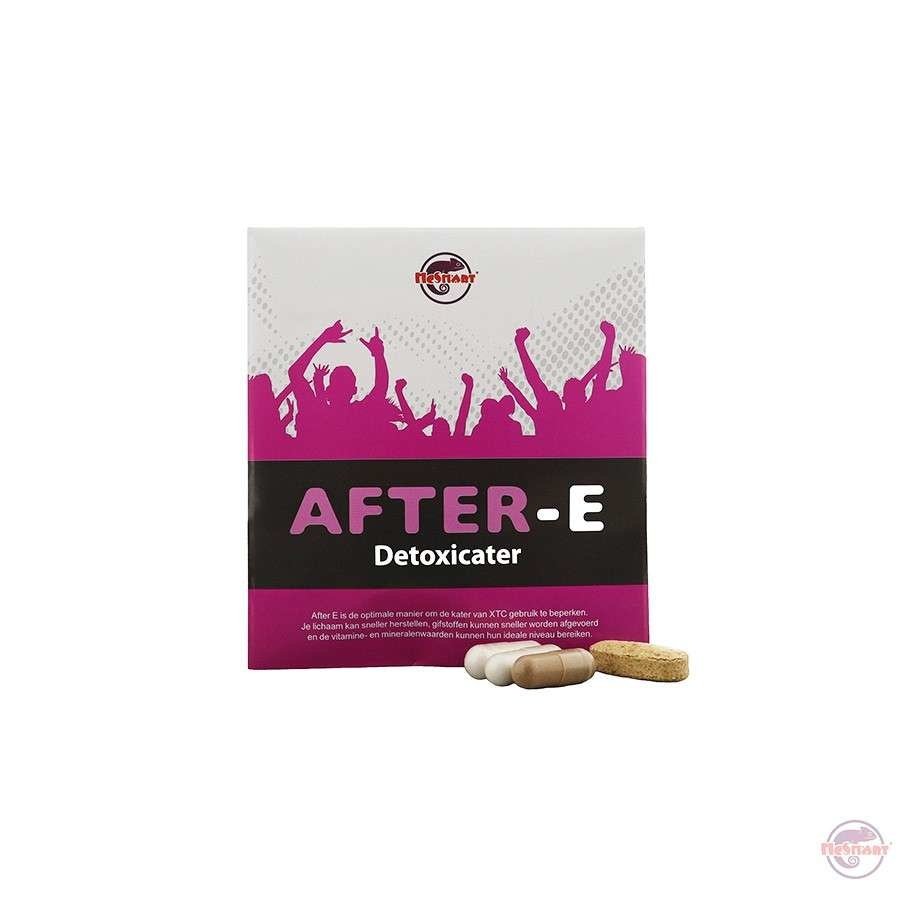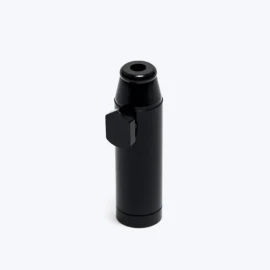Apple Fritter Auto
9,50 €
Quick Specifications
| Strain Type: | Autoflowering, indica-dominant hybrid (Sour Apple × Animal Cookies × Ruderalis) |
| THC Content: | 20-25% (lab reports show potential up to 27%) |
| CBD Content: | <0.5% (typically 0.2%) |
| Seed to Harvest: | 8-10 weeks |
| Plant Height: | 80-100 cm (up to 150 cm in optimal conditions) |
| Indoor Yield: | 400-450 g/m² (experienced growers report 500-700 g/m²) |
| Outdoor Yield: | 80-180 g per plant |
| Primary Terpenes: | β-Caryophyllene, α-Humulene, Limonene, α-Bisabolol, Endo-Fenchol, α/β-Pinene |
| Flavor Profile: | Sweet apple, caramel, earthy dessert notes |
| Difficulty Level: | Beginner-friendly with advanced potential |
| Primary Uses: | Recreational euphoria transitioning to body relaxation, stress relief, mood enhancement |
Apple Fritter Auto delivers exceptional potency and dessert-like flavor in a compact, fast-finishing autoflowering package. This indica-dominant hybrid combines euphoric cerebral effects with gentle body relaxation, making it perfect for users seeking high THC content without overwhelming sedation.
Genetics and Lineage
Apple Fritter Auto emerges from a carefully crafted genetic combination of Sour Apple and Animal Cookies, crossed with Ruderalis to create stable autoflowering characteristics. This strategic breeding produces a strain that captures the best qualities of its distinguished parentage.
Sour Apple contributes the signature fresh apple aroma and uplifting cerebral effects that define the strain’s initial experience. The fruity top notes create an immediately recognizable and appealing scent profile that translates beautifully into flavor.
Animal Cookies brings substantial potency and the beloved cookie-like sweetness that adds depth and complexity to the overall profile. This genetics line contributes to the strain’s impressive THC levels and provides the relaxing body effects that balance the initial cerebral stimulation.
Ruderalis genetics enable the autoflowering trait, allowing plants to flower based on age rather than light cycles. This addition creates the compact growth pattern and rapid finish time that makes Apple Fritter Auto ideal for small spaces and quick turnaround cultivation.
Different breeders may emphasize slightly different phenotypic expressions, resulting in variations in height, yield potential, and terpene emphasis. These variations allow growers to select genetics that best match their specific growing conditions and desired outcomes.
Flavor, Aroma, and Terpene Profile
Apple Fritter Auto presents a complex sensory experience dominated by fresh apple sweetness, baked caramel undertones, and subtle cookie-like dessert notes. The aroma builds layers of complexity, beginning with bright apple freshness and developing into rich, warm dessert tones reminiscent of freshly baked apple fritters.
β-Caryophyllene serves as the dominant terpene, contributing spicy and peppery undertones that add depth while potentially offering anti-inflammatory properties. This terpene creates the foundation for the strain’s therapeutic potential.
Limonene provides citrusy brightness that lifts the overall profile and contributes to the euphoric, mood-enhancing effects. This terpene adds clarity to the apple notes while supporting the strain’s uplifting characteristics.
α-Humulene delivers woody and earthy balancing notes that ground the sweeter elements and create complexity in the overall aroma profile. This terpene adds sophistication to the dessert-like qualities.
α-Bisabolol and Endo-Fenchol contribute floral and soothing notes that enhance the dessert complexity while potentially adding calming properties to the overall effect profile.
α/β-Pinene provides subtle pine and clarity notes that may help reduce potential grogginess, maintaining mental clarity throughout the experience.
Effects and Recommended Uses
Apple Fritter Auto typically begins with an uplifting cerebral rush that promotes creativity, social engagement, and positive mood enhancement. Users often report feeling energized and mentally stimulated during the initial phase, making it suitable for creative projects, social situations, and activities requiring focus and engagement.
As the experience develops, gentle body relaxation emerges without overwhelming sedation. This transition creates a balanced effect profile that allows users to remain functional while experiencing physical comfort and stress relief. The body effects tend to be soothing rather than heavily sedating, making the strain versatile for various times of day.
Optimal timing for Apple Fritter Auto spans from daytime through early evening use. The initial cerebral stimulation makes it excellent for creative work, social gatherings, and activities requiring mental engagement. Evening use can provide relaxation without the heavy sedation that might interfere with next-day activities.
Therapeutic applications commonly include stress management, mild to moderate pain relief, mood enhancement, and appetite stimulation. Users frequently report relief from anxiety, low-grade chronic pain, and depression symptoms. The balanced cannabinoid and terpene profile makes it suitable for those seeking therapeutic benefits without heavy sedation.
Dosage considerations are important given the strain’s potency. New users should start with small amounts and gradually increase as tolerance develops. The high THC content requires respect and mindful consumption to avoid overwhelming effects.
Growing Overview
Apple Fritter Auto suits growers of all experience levels, offering forgiving genetics with responsive characteristics for those implementing advanced techniques. The autoflowering nature eliminates the complexity of light cycle management while providing rapid results for time-conscious cultivators.
Ideal growers include beginners seeking a reliable introduction to cultivation, small-space or stealth growers requiring compact plants, and experienced cultivators wanting quick turnaround between harvests. The strain’s adaptability makes it suitable for various growing environments and skill levels.
Important considerations before starting include understanding that the short lifecycle limits recovery time from major stress or mistakes. Training techniques should be planned and implemented early in the growth cycle. Conservative feeding schedules prevent nutrient burn while supporting healthy development.
Complete Cultivation Guide
Environment Setup
Indoor cultivation thrives in small to medium grow spaces. Tents measuring 60×60 cm to 100×100 cm provide adequate space for single plants or small gardens. LED, CMH, or HPS lighting systems work effectively, with light intensity ranging from 350-600 µmol/m²/s depending on plant age and distance from canopy.
Autoflowering plants perform best under 18/6 or 20/4 light schedules throughout their entire lifecycle. Some growers use 24/0 lighting, but plants benefit from rest periods that support healthy development and reduce stress.
Outdoor cultivation succeeds in temperate to warm climates. Plants should be started after frost risk passes, making them suitable for balconies, small yards, and discrete outdoor locations. The compact size and quick finish make outdoor growing viable even in regions with shorter growing seasons.
Growing Medium and Containers
Soil cultivation using nutrient-rich, well-draining organic mixes provides the most forgiving approach for new growers. Quality soil blends buffer pH naturally and provide slow-release nutrition that reduces feeding complexity.
Soilless media including coco coir offers faster growth and greater control over nutrition. These systems require more attention to feeding schedules and pH management but can produce larger yields with proper care.
Container selection should prioritize 7-15 liter fabric pots that prevent root binding while maintaining the compact footprint desired for autoflowering cultivation. Smart pots improve root health through air pruning and better drainage.
Nutrition and pH Management
Feeding schedules for autoflowers require lighter applications than photoperiod plants. Begin with gentle vegetative nutrients and transition to bloom-focused feeding around weeks 3-4. Avoid aggressive feeding that can cause nutrient burn and stress.
pH targets should maintain 6.2-6.8 for soil cultivation and 5.8-6.2 for soilless media. Consistent pH levels ensure proper nutrient uptake and prevent deficiency symptoms.
EC/PPM management requires conservative approaches with autoflowers. Lower nutrient concentrations prevent burning while supporting healthy growth throughout the abbreviated lifecycle.
Training and Plant Structure
Low-stress training (LST) provides the safest and most effective method for shaping Apple Fritter Auto plants. Gently bending and tying branches opens the canopy for better light penetration and improved yields.
Defoliation should be applied selectively, removing only large fan leaves that block bud sites. Excessive defoliation can stress autoflowers beyond their recovery capacity.
High-stress techniques including topping or FIM can be applied by experienced growers but carry risks. These techniques must be implemented within the first 2-3 nodes to allow adequate recovery time.
SCROG systems work best when implemented as mini-SCROG setups that don’t require extended training periods. Traditional SCROG methods may extend beyond the autoflower’s vegetative window.
Flowering Development and Timeline
Weeks 1-2: Germination and early seedling development require minimal nutrition and lower light intensity. Focus on establishing healthy root systems and initial growth.
Weeks 3-4: Vegetative growth accelerates with increased feeding and light intensity. Begin training techniques and monitor for pre-flower development.
Weeks 4-5: Pre-flower and early flowering phases require transition to bloom nutrients. Implement final training adjustments and manage stretch growth.
Weeks 6-8: Full flower development shows rapid bud formation and resin production. Maintain optimal environmental conditions and monitor trichome development.
Weeks 8-10: Harvest window opens based on trichome color and plant maturity. Most growers harvest when trichomes show cloudy coloration with 10-25% amber for balanced effects.
Pest and Disease Prevention
Common issues include root binding in small containers, nutrient burn from overfeeding, light or heat stress, and bud rot in humid conditions. Preventive measures prove more effective than reactive treatments.
Environmental controls including proper ventilation, humidity management (40-50% during late flower), and temperature regulation prevent most problems. Good airflow around plants reduces pathogen pressure.
Beneficial microorganisms including mycorrhizae and beneficial bacteria support root health and nutrient uptake while providing natural disease resistance.
Yield Optimization
Canopy management through LST and selective defoliation maximizes light distribution to bud sites. Even canopies produce more consistent and larger yields.
Feeding precision during flowering supports bud development without causing nutrient burn. Monitor plants closely and adjust feeding based on plant response.
Environmental stability throughout flowering maintains optimal growing conditions that support maximum resin and terpene production.
Harvest and Post-Harvest Processing
Harvest Timing
Visual indicators include receding pistils, dense bud formation, and appropriate trichome coloration. Use a jeweler’s loupe or microscope to examine trichomes accurately.
Effect customization through harvest timing allows growers to influence the final product’s characteristics. Earlier harvests (mostly cloudy trichomes) provide more uplifting effects, while later harvests (increased amber) enhance body relaxation.
Flushing recommendations for synthetic nutrient systems suggest 7-10 days of pH-adjusted water before harvest. Organic growing systems typically require minimal or no flushing.
Drying and Curing
Drying conditions should maintain 15-21°C (60-70°F) with 45-55% relative humidity for 7-14 days. Proper drying preserves terpenes and prevents mold development.
Curing process involves burping sealed jars daily for the first 1-2 weeks, then weekly for 4-8 weeks. Extended curing improves flavor, smoothness, and overall quality.
Troubleshooting Common Issues
Growth Problems
Slow or leggy growth typically results from insufficient light intensity. Increase light levels and decrease distance between lights and plants while monitoring for heat stress.
Nutrient burn appears as brown leaf tips and margins. Reduce feeding strength and flush with pH-adjusted water to remove excess nutrients from the growing medium.
Flowering Issues
Hermaphrodite development can occur under stress conditions. Remove affected flowers immediately and reduce environmental stressors including heat, light burn, and pH fluctuations.
Bud rot requires immediate action including affected material removal, improved airflow, and reduced humidity levels. Prevention through environmental control proves more effective than treatment.
Comparison with Alternatives
Apple Fritter Auto vs. Photoperiod Apple Fritter
Timeline differences show autoflowers completing in 8-10 weeks total while photoperiod versions require separate vegetative and flowering periods extending several months.
Yield potential typically favors photoperiod plants when given extended vegetative periods, but autoflowers provide faster turnover and multiple harvests per year.
Effect profiles remain similar between auto and photo versions, with both expressing the characteristic terpene and cannabinoid profiles that define the Apple Fritter experience.
Similar Autoflower Alternatives
Animal Cookies Auto derivatives provide enhanced cookie flavors and potency for those prioritizing the dessert-like characteristics.
Sour Apple autoflower varieties emphasize fruity and sour elements for growers preferring brighter, more citrusy profiles.
Speed considerations make Apple Fritter Auto competitive with other fast-finishing autoflowers while providing superior flavor complexity.
Therapeutic Applications and Effects
Common Reported Benefits
Stress and anxiety relief represents the most frequently reported therapeutic application. The balanced cannabinoid profile and calming terpenes create conditions suitable for stress management.
Pain management for mild to moderate chronic pain conditions benefits from the strain’s anti-inflammatory terpenes and THC content. Users report relief from various pain types without excessive sedation.
Mood enhancement through the uplifting initial effects helps address symptoms of depression and low mood. The cerebral stimulation can improve outlook and motivation.
Appetite stimulation makes the strain suitable for those experiencing appetite loss due to various conditions or treatments.
Considerations and Precautions
High THC content requires careful dosing, especially for users with low tolerance or those taking medications that may interact with cannabis. Start with minimal amounts and increase gradually.
Not recommended for users seeking high-CBD products or those requiring heavy sedation for sleep disorders. The strain’s effects lean toward balanced relaxation rather than strong sedation.
Medical consultation should precede therapeutic use, especially for users with existing medical conditions or those taking prescription medications.
Purchasing Considerations
Quality Indicators
Germination rates from reputable seed banks typically exceed 80-90%. Choose suppliers offering germination guarantees and transparent breeding practices.
Genetic stability ensures consistent phenotypic expression across multiple plants. Research breeder reputation and review growing reports from other cultivators.
Lab testing including certificates of analysis (COA) for cannabinoid and terpene content provides verification of advertised characteristics.
Packaging and Storage
Discrete shipping protects privacy while ensuring seeds arrive in good condition. Temperature-controlled shipping during extreme weather protects viability.
Proper storage in cool, dark, dry conditions maintains seed viability for extended periods. Refrigeration in sealed containers provides optimal long-term storage.
Frequently Asked Questions
Can Apple Fritter Auto be cloned?
Cloning autoflowers is not recommended as clones maintain the same internal timing as the mother plant, resulting in minimal vegetative growth and poor yields compared to seeds.
Is topping safe for autoflowers?
Topping carries risks due to the limited recovery time in autoflower lifecycles. LST provides safer yield improvements, but experienced growers can top very early in development if desired.
How many plants per square meter?
For optimal yields of 400-450 g/m², grow 4-6 plants per square meter using LST techniques. Adjust plant numbers based on growing style and experience level.
What height should I expect?
Most plants reach 80-100 cm in height, with outdoor plants potentially reaching 150 cm under ideal conditions. Indoor height can be controlled through training techniques.
How long until harvest?
Expect 8-10 weeks from seed germination to harvest. Monitor trichome development for precise harvest timing based on desired effects.
Is this suitable for beginners?
Yes, Apple Fritter Auto offers forgiving genetics, manageable size, and straightforward growing requirements that make it excellent for new cultivators following proper guidance.
Do I need lab reports?
Certificate of analysis (COA) documents verify advertised THC levels and terpene profiles. Request these documents from suppliers for accurate product information.
Legal compliance reminder: Always verify local laws regarding cannabis cultivation, possession, and use before growing or consuming any cannabis products. Store all cannabis materials securely away from children and pets.
Related Products
Frequently Asked Questions
Everything You Need to Know















